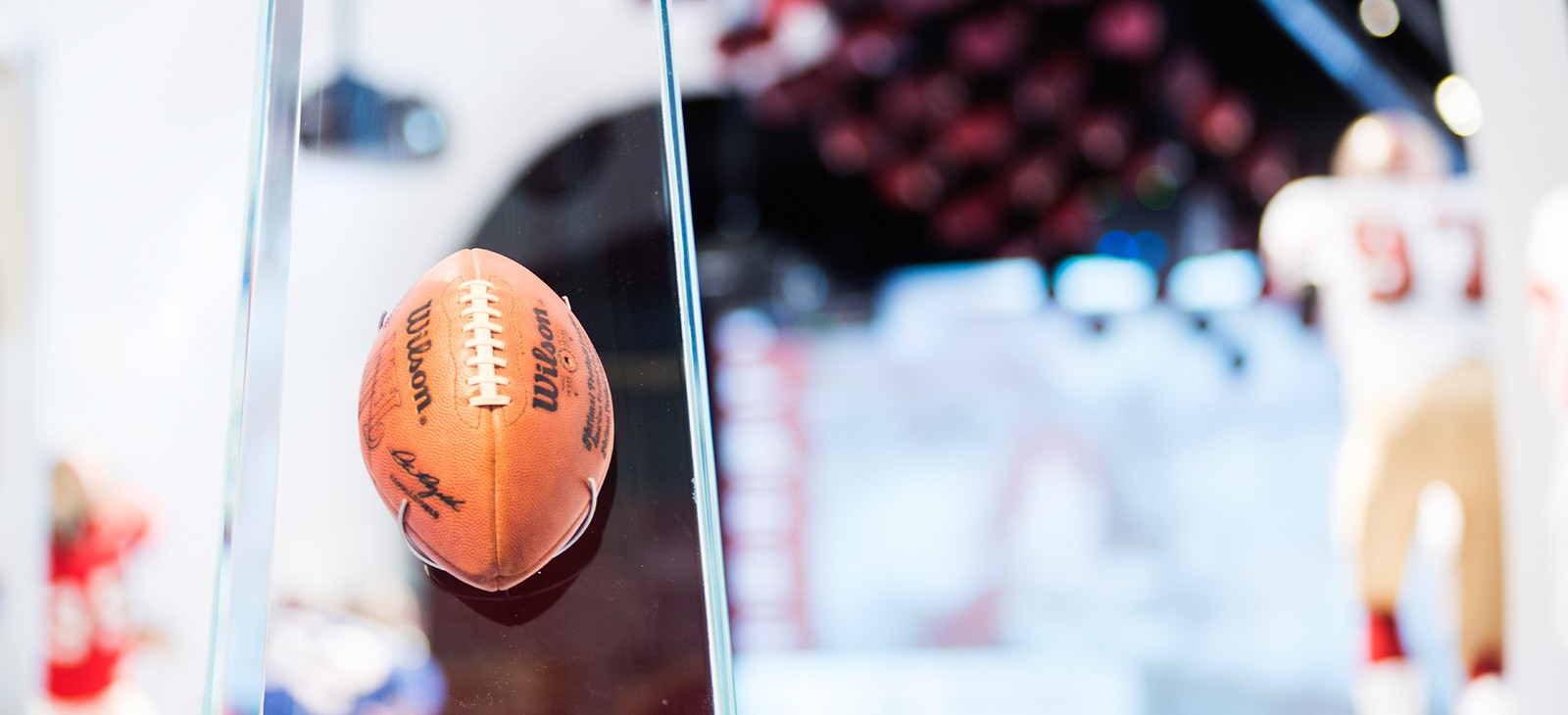Clark’s Catch Sparks NFL Dynasty
Dwight Clark’s game-winning touchdown catch to beat Dallas at the 1981 NFC Championship game is an iconic moment in 49ers history. But Clark is quick to share the glory. He knows that several other critical plays were needed to bring San Francisco its first NFC title.
“Joe Montana likes to tell me (jokingly) that play should have been called “The Throw” not “The Catch,” Clark said.
Indeed, most fans recall Montana’s accurate throw and Clark’s athletic leap and catch to win the game. But there also were heroic efforts from unsung players like Lenvil Elliott. Coach Bill Walsh liberally employed the journeyman running back on that final drive. Elliott carried four times for 32 yards to put the 49ers in scoring position.
Then, facing third down on the Cowboys’ six-yard line, and trailing 27-21, Walsh calmly called for a timeout. On the sideline he told quarterback Joe Montana to run “Sprint Right Option.” It was a play practiced over and over during 49ers training camp at Rocklin. As usual, Freddie Solomon would be the primary receiver, but Walsh instructed Montana to look in Clark’s direction if Solomon was covered. As Montana raced back to the huddle Walsh told him to throw the ball away if neither man was open.
At the snap, Solomon sprinted off the line of scrimmage and slipped to the ground. Montana spotted Solomon’s mishap and quickly rolled right pursued by a pair of Cowboys. Then he heaved a pass toward the back of the end zone that seemed uncatchable. Clark soared impossibly high into the darkening sky to make a fingertip grab and change the fate of the franchise.
“The best part of that play, when you watch the film, is Bill’s (Walsh) reaction,” Clark said. “Everyone is going nuts on the sideline and Bill calmly takes off his headset and walks to the other end of the bench. He shows almost no emotion. It was not a surprise to him that we scored on that play.”
But the game did not end with “The Catch.” A capacity crowd at Candlestick held its collective breath as kicker Ray Wersching trotted onto the field. Long time 49ers fans recalled that bad mojo inevitably seemed to follow the Niners in playoff games against Dallas. Wersching put that thought to rest when he converted the extra point that gave San Francisco a 28-27 lead.
And then the defense stepped in to save the day.
After the ensuing kickoff the Cowboys had 50 seconds to march into game-winning field goal range. On the first play from scrimmage, Dallas quarterback Danny White connected with Drew Pearson on a deep crossing route. A desperate one-armed, horse-collar tackle by 49ers defensive back Eric Wright kept Pearson from sailing into the end zone.
With 38 seconds remaining, the Cowboys needed to gain 10 more yards before taking a shot at a field goal. On the next play, 49ers defensive lineman Lawrence Pillers stormed into the Dallas backfield, sacked White and forced a fumble. Defensive end Jim Stuckey smothered the football. Candlestick Park erupted. Tom Landry’s Cowboys were finished.
As Clark can attest it took more than “The Catch” to catapult the 49ers to their first Super Bowl. They also needed the throw, the kick, the one-armed tackle, the sack, and the fumble recovery to help launch one of the great dynasties in NFL history.
To see the actual football Dwight Clark caught to score the winning touchdown against Dallas, and the shoulder pads he wore in that game, visit the 49ers Museum presented by Sony. Guests also will view skin-tingling film highlights of “The Catch” from several camera angles. The jersey worn by Jim Stuckey when he saved the day with a last minute fumble recovery also is on display.
And, of course, guests can see the Hall of Fame statues of Clark, Montana, Walsh and other members of the Super Bowl XVI winning squad. For more information on Museum tickets, hours and content, visit levisstadium.com/Museum. For group pricing call 415-GO-49ERS.
By: Joe Hession
49ers Museum Historian

